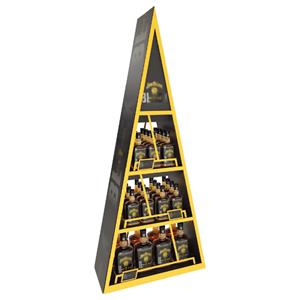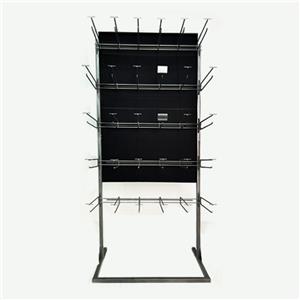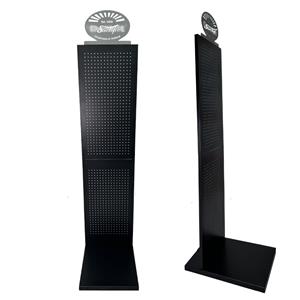Globalne trendy w zakresie regałów wystawowych: co kształtuje handel detaliczny w 2025 roku?
Global Display Rack Trends: What’s Shaping Retail in 2025?
Table of contents
1)Introduction
2)Custom Display Racks: Designed for the Perfect Fit
3)Sustainable Materials: The Green Trend
4)Electronic Display Screen Racks: Captivating Digital Experiences
5)Modular & Multi-Functional Display Racks: Versatility in Action
6)The Global Display Rack Market: A Billion-Dollar Industry
7)Future Innovations: AI, Smart Tech, and Personalization
8)Conclusion: Elevate Your Brand with the Right Display Rack
9)Sintop Value
A high-quality display rack is more than just a functional stand—it enhances brand identity, elevates product appeal, and captures customer attention. But what are the latest trends shaping the display rack industry? From custom designs to smart technology, modern display racks are evolving beyond simple product holders into strategic sales tools. Based on global insights and years of experience serving European and American brands, this guide explores the key trends that define a truly international-standard display rack.

1. Custom Display Racks: Designed for the Perfect Fit
Customization is at the forefront of modern retail solutions. Custom display racks are tailored to fit a product’s unique characteristics, ensuring maximum impact. Much like a bespoke suit, these racks are crafted with precision—considering the product’s shape, functionality, and placement within a retail environment. A well-designed custom rack enhances brand identity, boosts product visibility, and ensures an engaging shopping experience.
2. Sustainable Materials: The Green Trend
As sustainability gains momentum, eco-friendly display racks are becoming a top choice for brands. Consumers are increasingly drawn to businesses that prioritize environmentally responsible materials, reinforcing brand trust. However, eco-friendliness isn’t just about using raw materials. For example, melamine panels—commonly used in wood-based display racks—offer durability, heat resistance, and moisture protection while remaining non-toxic and safe. Opting for sustainable materials not only enhances brand perception but also aligns with global environmental goals.
3. Electronic Display Screen Racks: Captivating Digital Experiences
Digital integration is transforming retail spaces, and electronic display screen racks are at the forefront of this shift. Brands are using LED screens and interactive displays to showcase promotional videos, product demos, and brand stories. Research suggests that dynamic visual storytelling is far more effective than static displays or traditional sales pitches. Electronic display racks not only increase foot traffic but also enhance customer engagement and boost sales.
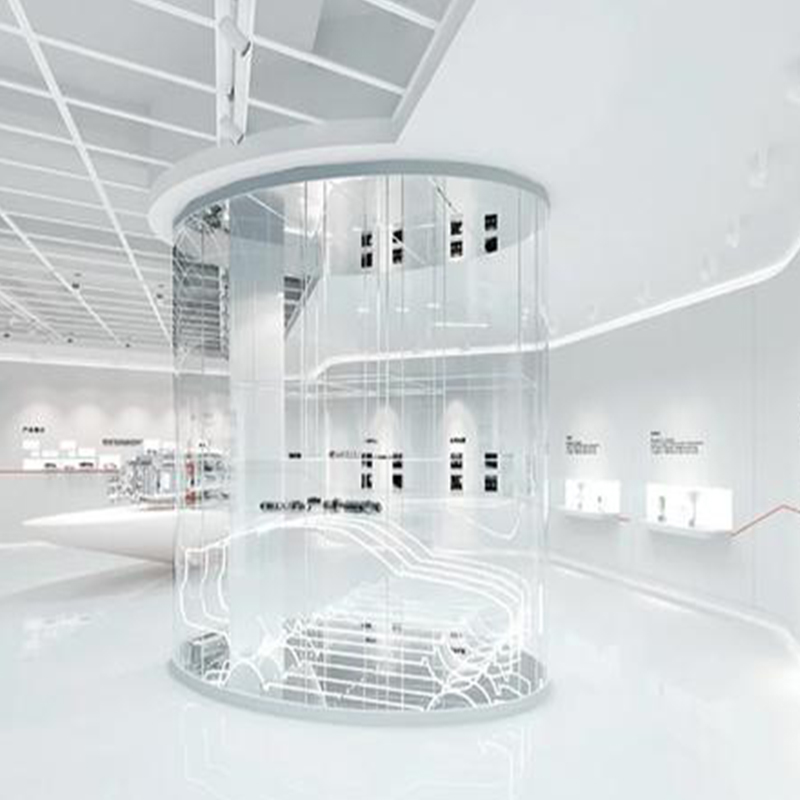
4. Modular & Multi-Functional Display Racks: Versatility in Action
Retailers are now embracing modular display racks that offer flexibility across different product categories. These racks allow for adjustable shelves, hooks, trays, and branding elements, making them highly adaptable. Unlike older, cluttered multi-use displays, today’s modular racks balance functionality and aesthetics, enabling brands to create dynamic setups for clothing, electronics, cosmetics, and more. Their efficiency and ease of customization make them a game-changer for retail businesses.
5. The Global Display Rack Market: A Billion-Dollar Industry
Despite being a niche sector, the display rack industry plays a vital role in global retail sales. According to market research, the industry is expected to reach $17.94 billion, with steady growth across major regions:
North America: Leading with 32.2% of the global market.
Europe: Following closely at 30.1%.
Asia-Pacific: A rapidly expanding sector, accounting for 27.4%, particularly driven by China's booming retail industry.
China’s display rack market alone was valued at RMB 10.6 billion (USD 1.7 billion) in 2015, with continuous growth projected in the coming years. These figures highlight the strong demand and investment opportunities in the display rack sector.
6. Future Innovations: AI, Smart Tech, and Personalization
The next phase of display rack evolution will focus on smart retail solutions. AI-powered racks, big data analytics, and sensor-based interactions will revolutionize how products are showcased. Retailers are also leaning towards modular, eco-friendly, and highly interactive displays, making customization more accessible and engaging. As brands seek innovative ways to capture attention, digital, personalized, and intelligent display racks will become essential tools in the retail landscape.
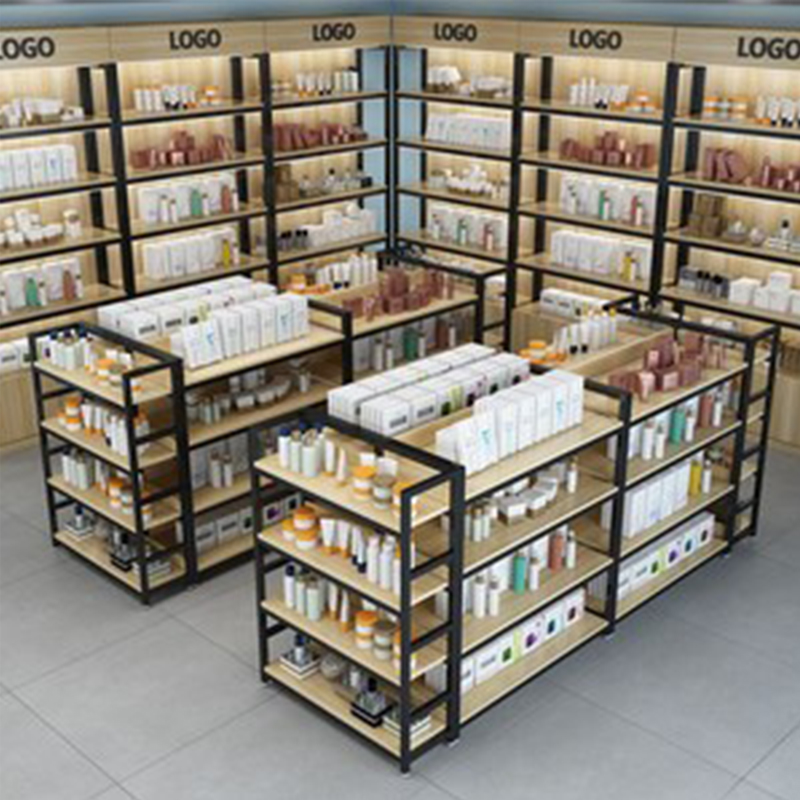
Conclusion: Elevate Your Brand with the Right Display Rack
A strategically designed display rack is no longer just a product holder—it’s a powerful sales tool that enhances customer experience, boosts brand recognition, and drives revenue. Whether it's a custom display rack, electronic display screen rack, or modular display rack, investing in the right display solution ensures that your brand stays ahead in an ever-evolving market.
Are you ready to transform your product presentation? Stay ahead of the curve and explore display racks that make an impact! 🚀
Sintop Value: Elevating Display Racks with Innovation & Quality
At Sintop, we are dedicated to designing and manufacturing high-quality display racks that help brands stand out in competitive retail spaces. With years of expertise in creating customizable, durable, and visually appealing retail display racks, we stay ahead of trends by integrating eco-friendly materials, modular designs, and smart display technology. Our solutions support businesses in enhancing product visibility, optimizing store layouts, and improving customer engagement. Choose Sintop to elevate your brand presence with creative display racks tailored to your needs.

Contact information
Strona internetowa: www.sintopfixtures.com
WeChat/WhatsApp: +86 15980885084
Adres e-mail: elly@xm-sintop.com
Często zadawane pytania
1. Czym jest wyposażenie sklepu?
Wyposażenie sklepu to niezbędny sprzęt i meble używane w przestrzeniach handlowych do eksponowania, organizowania i przechowywania towarów. Przykłady obejmują regały, stojaki, gabloty, lady i haki.
2. Dlaczego wyposażenie sklepu jest ważne?
Wyposażenie sklepu podnosi komfort zakupów poprzez uporządkowanie produktów, poprawę dostępności, maksymalizację przestrzeni i tworzenie atrakcyjnych ekspozycji, które przyciągają klientów i zwiększają sprzedaż.
3. Jakiego rodzaju wyposażenie sklepów jest powszechnie stosowane?
Do typowych typów wyposażenia sklepów należą:
Regały (półki ścienne, półki wolnostojące, półki regulowane)
Gabloty (witryny szklane, gabloty nablatowe)
Stojaki (wieszaki na ubrania, stojaki ekspozycyjne)
Lady (kasy, lady usługowe)
Haki i tablice perforowane
Zaślepki
Oznakowanie i grafika
Manekiny
4. Jak wybrać odpowiednie wyposażenie sklepu do swojej przestrzeni handlowej?
Weź pod uwagę rodzaj towaru, układ sklepu i potrzeby związane z brandingiem. Wyposażenie powinno być funkcjonalne, uzupełniać projekt sklepu i mieścić się w budżecie. Oceń swoją przestrzeń, aby określić najlepsze typy i konfiguracje wyposażenia dla optymalnej prezentacji produktu i przepływu klientów.
5. Czy wyposażenie sklepu można dostosować do indywidualnych potrzeb?
Tak, wiele elementów wyposażenia sklepu można dostosować do marki i konkretnych potrzeb sklepu. Opcje dostosowywania obejmują materiały, kolory, rozmiary i wzory. Współpraca z dostawcą lub projektantem elementów wyposażenia może pomóc w stworzeniu elementów wyposażenia pasujących do stylu i wymagań funkcjonalnych sklepu.
6. W jaki sposób mogę maksymalnie wykorzystać przestrzeń sklepu za pomocą wyposażenia?
Wykorzystaj urządzenia, które optymalizują przestrzeń pionową, takie jak półki ścienne i wysokie regały ekspozycyjne. Modułowe i regulowane urządzenia mogą dostosowywać się do zmieniających się towarów lub układów sklepu. Zaplanuj układ sklepu ostrożnie, aby zapewnić efektywne wykorzystanie przestrzeni i płynny przepływ klientów.
7. Jak dbać o wyposażenie sklepu?
Regularnie czyść i sprawdzaj urządzenia, aby upewnić się, że są w dobrym stanie. Sprawdzaj pod kątem zużycia i napraw lub wymień uszkodzone części. Postępuj zgodnie z wytycznymi producenta dotyczącymi konserwacji i czyszczenia, aby wydłużyć żywotność urządzeń.
8. Czy wyposażenie sklepu można stosować w różnych typach sklepów detalicznych?
Tak, wyposażenie sklepu można dostosować do różnych środowisk handlowych, w tym sklepów odzieżowych, sklepów z elektroniką, sklepów spożywczych i innych. Wybór wyposażenia zależy od konkretnych potrzeb i towarów sklepu.
9. W jaki sposób wyposażenie sklepu może poprawić jakość obsługi klienta?
Dobrze zaprojektowane wyposażenie ułatwia znalezienie i przeglądanie produktów, co poprawia ogólne wrażenia zakupowe. Efektywne wykorzystanie wyposażenia tworzy uporządkowane, estetyczne środowisko, które zachęca klientów do spędzania większej ilości czasu w sklepie.
10. Gdzie mogę kupić wyposażenie sklepu?
Wyposażenie sklepu można nabyć od wyspecjalizowanych dostawców wyposażenia, sklepów z wyposażeniem detalicznym lub producentów wyposażenia niestandardowego. Sprzedawcy internetowi i lokalni dostawcy również oferują szeroki wachlarz opcji.

